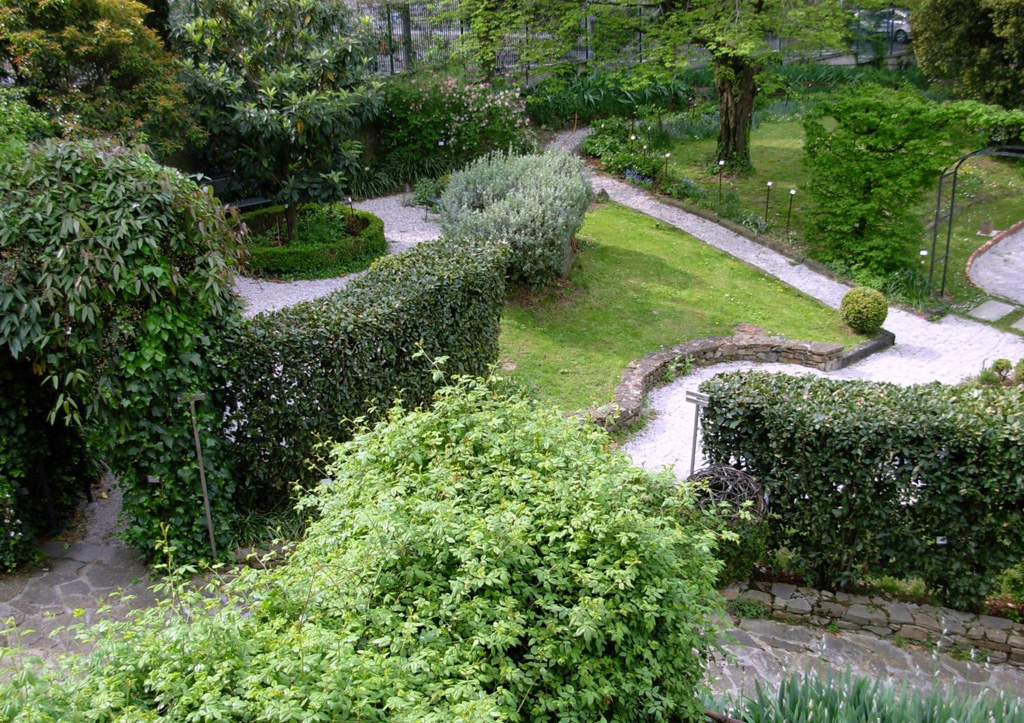
Civic Botanical Garden
This post is also available in:
 Italiano (Italian)
Italiano (Italian)
In 1843, the municipality of Trieste inaugurated the new Botanical Garden: a place where to run experiments with the Austrian black pine, entrusting that very responsibility to the pharmacist Bartolomeo Biasoletto.
In 1861, the garden was enlarged by Muzio Tommasini who introduced the typical floral species of Friuli Venezia Giulia. When the botanist Carlo de Marchesetti was appointed director in 1903, the garden became a public institution annexed to the Natural History Museum. The area reached its maximum splendour, while marsh species and varieties suitable for industrial, economic and dietary purposes were introduced.
The botanical garden was closed for lack of resources in 1986, but underwent a major restoration from 1991 to 1997, before re-opening to the public.
The garden stretches on the slope of a hill in the suburbs of Trieste, next to a residential area. The botanical garden borders the southern public road and the northern woodlands of spontaneous trees (Bosco Farneto) and artificial flora (Bosco dei Pini).
The carefully arranged network of walkways takes visitors around several astounding collections in the garden.
Main collections
– Indoor plants.
The most common toxic or lethal houseplants are exhibited at the beginning of the path dedicated to “the garden of poisons”.
– Ornamental plants.
In the flowerbeds along the perimeter of the garden, some ornamental plants are visible, including Hedera spp., Hydrangea spp., Hosta spp., Helleborus spp., Paeonia spp., Rosa spp., and Viola spp.
There are also some bulbous varieties with spring-flowering (Crocus spp., Galanthus spp., Eranthis spp.), as well as autumnal specimens (Sternbergia spp.).
– Florilegio of magical plants.
In an esoteric-styled flowerbed, enriched with a stone fountain and a symbol of the trinity, visitors can find the main plants with magical, religious and mythological meanings. Magic is a metaphor for the relationship with nature, the creation of a mental barrier against the unknown, as well as a stimulus for learning about traditions (mostly involving the healing powers of plants) or dealing with an implicit prohibition related to any dangerous plant. In our case, magic would not be an incentive to superstition.
– The Garden of the simple.
This garden dedicated to officinal plants follows an orderly arrangement (by Pignatti, 1982).
The initial choice of species was actually based on the list of plants registered in the Official Pharmacopoeia of the Italian Republic, then integrated with those present in the ethnobotanical studies of Friuli-Venezia Giulia (by Lokar, Poldini, Rossi). The historical listing of Marchesetti was also taken into account, as well as the research concerning the officinal plants of the Austro-Hungarian coast (by Tominz, 1881).
– Lotus flowers.
In the garden pools, there are several aquatic species including a collection of lotus flowers (Nelumbo spp.) which bloom in July and in August with iridescent colours in white and yellow- shades pink.
– Food plants.
After careful phytoalimurgy research (dietary use of spontaneous plants), this area was organized according to the different growth environments of individual species, so as to facilitate their recognition and make them more prominent.
– The formal garden.
In the neat flowerbeds bordered by low box hedges, there are some collections of ornamental plants, organized by different blooming periods of the year. There are many different species, including Helleborus spp., Narcissus spp., Paeonia app. shrubby, Iris spp., Hydrangea spp., Hosta spp., Rosa spp., and Salvia spp.
– Dye plants.
A collection of dye plants was included to exhibit some of the main species historically used by dyers, along with the spontaneous ones of more limited and localized use. Exotic varieties are visible as well, but they cannot withstand our harsh winters and must be protected inside greenhouses.
– Useful plants.
Following a careful restoration of the nearby structures and roads, this section will house the main “human plants”, that is, those that have always been used for dietary, cosmetic and textiles applications throughout the history of the humankind.
– The garden of poisons – poisonous plants path
This guided tour allows visitors to discover some poisonous plants in details. For each one of them, scientific information is provided, along with notions about their different use and some curiosities. The path also aims to highlight what is good about each poison: the pharmacological information on each tag details the very therapeutic uses of the toxic substances found in these plants.
This post is also available in:
 Italiano (Italian)
Italiano (Italian)
Contatti
Via Carlo de Marchesetti 2 - 34139 Trieste(TS)
040 360068
ortobotanico@comune.trieste.it
Altre info
Biglietti: intero 2,10 euro ; ridotto 1,00 euro; visite guidate 1,60 euro ; gratuito fno a 5 anni.
Orario di apertura: da marzo dalle 9.00 alle 13.00, da martedì a domenica; chiuso lunedì e nelle feste civili e religiose.

